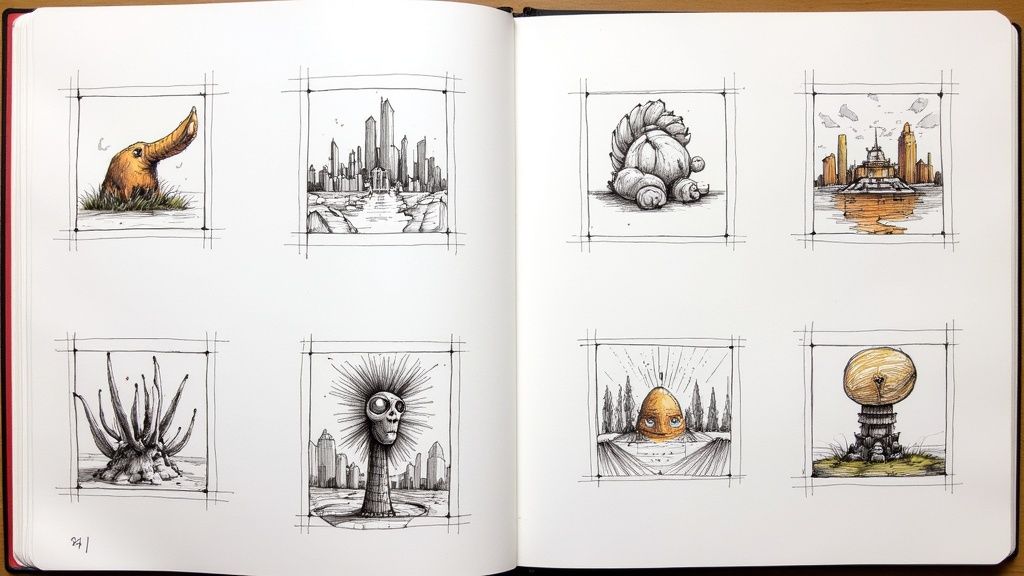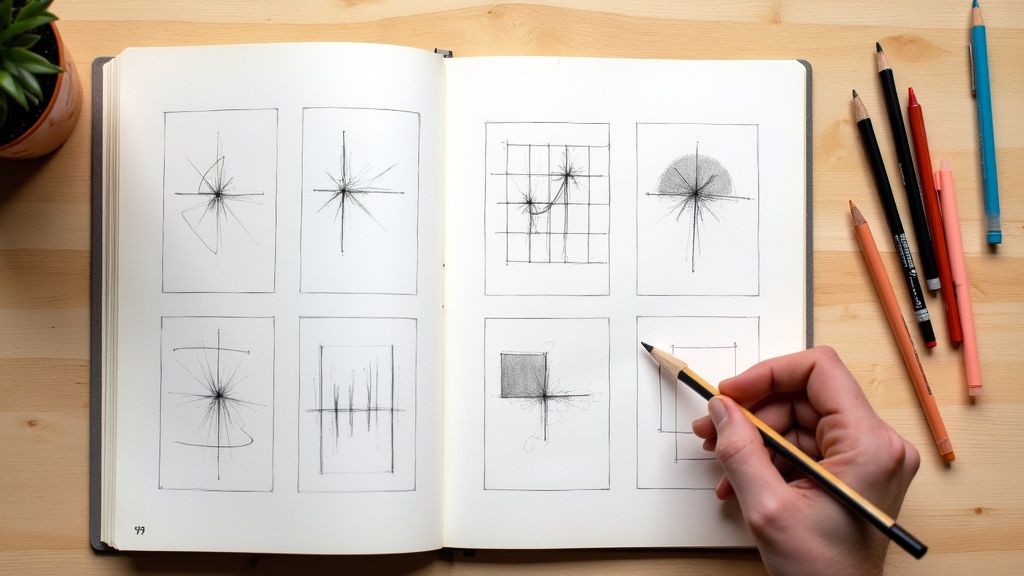Starting your drawing journey can feel overwhelming—so many tools, techniques, and expectations. But here’s the truth: drawing doesn’t have to be hard to be good. In fact, easy drawings are where most great artists begin. They allow you to build confidence, develop basic skills, and most importantly, enjoy the creative process.
This guide is designed for complete beginners who want to start drawing without pressure. You’ll learn where to begin, what to draw, how to improve, and how to stay motivated.
Why Easy Drawings Are the Best Way to Start
Too many beginners give up because they expect to be good immediately. The truth is, every skilled artist started by drawing simple shapes, objects, and forms. Easy drawing helps you:
- Get comfortable with your tools
- Practice without the fear of failure
- See progress quickly
- Have fun while learning
Instead of starting with complex compositions, focus on exercises that train your hand and eye to work together.
If you're unsure where to begin, check out these curated easy drawing ideas designed specifically for new artists.
What You Need to Start Drawing
You don’t need an art store haul to get going. Keep it simple and affordable.
Basic Tools:
- Pencils: Start with a standard HB pencil. Later, try softer ones like 2B or 4B for shading.
- Paper: A sketchbook is great, but printer paper works just fine.
- Eraser: A kneaded eraser is perfect for soft corrections.
- Sharpener: A good sharp tip gives you better line control.
- Optional: Fineliner pen for outlining, colored pencils for fun.
That’s it. Don’t let materials be the barrier. The goal is drawing—not gear collecting.
Getting Comfortable with Shapes and Lines
All drawings, no matter how complex, start with basic shapes. Think of your first sketches as training wheels for your hand-eye coordination.
Practice These First:
- Straight and curved lines
- Circles and ovals
- Squares, rectangles, and triangles
- Simple combinations (like a snowman: three stacked circles)
Drawing ideas that focus on these elements—like those in this easy sketch-focused collection—help you build muscle memory while staying creatively engaged.
20 Easy Drawing Ideas for Beginners
Need inspiration? These simple ideas are great for building your daily practice and confidence:
Everyday Objects:
- A coffee cup
- A plant pot
- A spoon
- Your phone
- A window view
Food & Snacks:
- A slice of pizza
- An ice cream cone
- A donut
- A loaf of bread
- A fruit bowl
Simple Animals:
- A cartoon cat
- A fish
- A turtle
- A frog
- A bird on a branch
Outdoors:
- A tree
- A cloud with rain
- A mountain range
- A sun setting
- A flower in a vase
Still unsure what to draw? The drawing ideas for beginners section has tons more prompts to keep your momentum going.
Step-by-Step: Drawing Your First Object
Let’s walk through a simple object together: a cup of coffee.
Step 1: Draw the Base
Start with an oval for the top opening. This is the rim of the cup.
Step 2: Add the Body
Draw two downward curves from each side of the oval. Connect them at the bottom with a gentle curve.
Step 3: Handle
On one side, draw a small ear-shaped curve that connects to the body.
Step 4: Add Details
Add a curved line inside the top oval to show the surface of the coffee. Lightly shade or crosshatch to give it depth.
Step 5: Finalize
Clean up any stray lines, go over your main lines with a pen (optional), and sign your name.
This simple method—starting with shapes and adding detail—is something you’ll repeat often.
Try This: Daily Drawing Warm-Up
Warming up before a drawing session helps you loosen your hand and shift into creative mode. Here’s a 5-minute routine:
- Draw rows of straight lines (horizontal and vertical)
- Draw circles and ovals of varying sizes
- Fill one row with boxes or triangles
- Doodle basic shapes combined (e.g., a house made of square and triangle)
You’ll find more exercises like these in the sketches drawing ideas for beginners section.
Drawing With Kids or As a Family?
If you’re learning to draw alongside a child—or just want some lighthearted options—check out these easy drawing ideas for kids. They’re fun, forgiving, and often more creative than adult-focused prompts.
Try drawing:
- A smiling sun
- A dinosaur
- A rocket ship
- A cartoon banana
- A puppy’s face
These prompts help unlock creativity while keeping things fun and accessible.
How to Improve Over Time (Without Getting Stuck)
It’s easy to plateau if you draw the same things over and over. Here’s how to keep growing:
1. Track Your Progress
Take a photo or scan your drawings every week. Looking back is the best motivation.
2. Learn to Observe
Practice drawing what you see, not what you think something looks like. This strengthens accuracy and realism.
3. Try Light Shading
Use side pencil strokes to add dimension. Start with one object and shade just one side based on a light source.
4. Set Small Challenges
Challenge yourself to draw 5 different fruits, 10 types of leaves, or 3 styles of animals.
5. Ask for Feedback
Share your work with a friend, in a forum, or on social media. Constructive feedback accelerates your learning.
Beginner-to-Intermediate Progression Path
If you’re enjoying the process and want to keep improving, here’s a simple path:
Level | Focus Area | Example |
|---|---|---|
Beginner | Simple shapes & objects | A cup, apple, flower |
Early Intermediate | Light shading & proportions | A desk setup, two objects |
Intermediate | Overlapping objects, textures | A small room corner or shelf |
Confident | Perspective, basic figures | A hand, a chair, or self-portrait |
Move at your own pace. Drawing is about process, not perfection.
Final Thoughts
Easy drawing is not a step down—it's the most important step up. It’s where habits are formed, creativity is unlocked, and confidence is built.
If you’re consistent, even 10 minutes a day will make a difference. Keep it light. Keep it fun. Keep showing up. You’re already on the path.
And when you’re ready for your next sketch, head to easy drawing ideas and keep the inspiration going.


